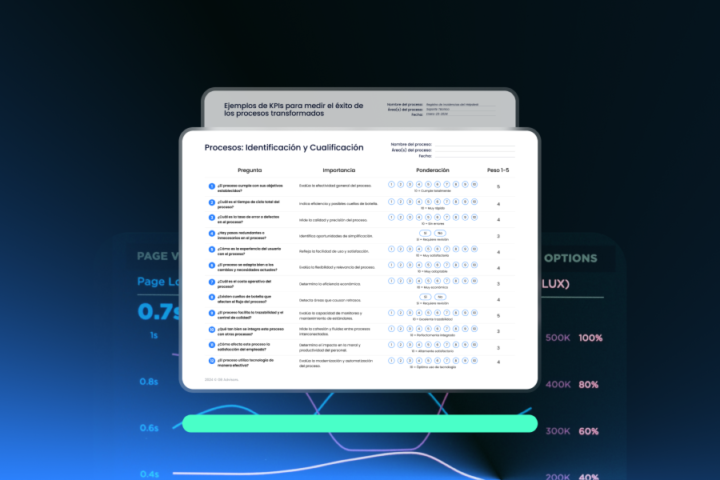 On many occasions, we have talked about cyberattacks, vulnerabilities and digital security. But why are there so many attacks? Seizing the bank details of a company can generate profits for an attacker. Business espionage exists and many competitors pay good money for information. But that’s the tip of the iceberg. The amount of money earned through cyber-attacks is very high and increases every day.
On many occasions, we have talked about cyberattacks, vulnerabilities and digital security. But why are there so many attacks? Seizing the bank details of a company can generate profits for an attacker. Business espionage exists and many competitors pay good money for information. But that’s the tip of the iceberg. The amount of money earned through cyber-attacks is very high and increases every day.
To get an idea of how much money moves, let’s take this data. On average, for every $12 stolen or lost due to cybercrime, there’s an investment of $1 in cybersecurity. Only in money laundering, for every $200 billion stolen, $136 billion applies in cybersecurity.
There is an imbalance between the resource’s investment against cybercrime. This requires that organizations improve the efficiency of their preventive measures. Not only at an implementation level, but also how we use it. An approach based on the level of risk for vulnerability management is necessary; one that points to those that are most likely to be used in an attack.
Vulnerabilities and market types
We must also know the types of the black markets to which we expose. Not all hackers attack in the same way. And not all attacks go for one type of information. It is this variability that will help us understand how much security we should apply to our assets. Three very different market segments compose the supply chain of operating income. White, Gray and Black markets. Each of these markets works different objectives; to reveal, defend, obfuscate and attack companies.
 Black and white markets are symbiotic, although they diverge in motives and objectives. These supply chains can be parallel or intercepted for legitimate and criminal buyers. The gray market focuses on attacks aimed at matters of national security interest. This market seeks a disruptive impact on the supply chain. This is done by exploiting values and decreasing the availability of intelligence.
Black and white markets are symbiotic, although they diverge in motives and objectives. These supply chains can be parallel or intercepted for legitimate and criminal buyers. The gray market focuses on attacks aimed at matters of national security interest. This market seeks a disruptive impact on the supply chain. This is done by exploiting values and decreasing the availability of intelligence.
White Market
This is the visible and legitimate part of the vulnerability supply chain. On a commercial level, it’s for suppliers of hardware, software, and cybersecurity. It’s aimed for open source projects, public vulnerabilities, databases, etc.
The white market works with complete and coordinated dissemination practices in general; along with offers of products and services designed to protect against cyber threats.
Black market
Although the dark web is the best known and easy to access face, it’s not the only one. We’re talking about sites with access to everything from cybercriminals to traditional assaulter. All kinds of attacks, such as ransomware, hacking of organizations, hiding information of terrorist groups, etc. It’s a chain of service for providers and markets, although chaotic and unstable. They also have the capability to carry out illegal cyber operations. Bitcoin and other cryptocurrencies are the main payment mechanism.
Gray Market
Its main participants are state-sponsored agencies and entities. Organizations such as home security, military, and intelligence agencies. Since the actions are geopolitical, their legality is in a gray area involving even nations. One of the paradoxes is that the gray market is actually less visible than the black market. This is because the color designations refer to legality, not its coverage. The media spreads black market trends. Yet the activities of national affairs is more difficult to attribute.
Where are markets handled?
 A few major brokers dominate the market for contracting exploits. These operate almost only in the gray market, with growing demand and a market value that is not known. What is known is that payment fees have increased 500 percent in the last two years.
A few major brokers dominate the market for contracting exploits. These operate almost only in the gray market, with growing demand and a market value that is not known. What is known is that payment fees have increased 500 percent in the last two years.
Although this kind of business occurred on the dark web, the market share for exploits has decreased.
Now, most of the activity works with a completely anonymous exploit brokerage set. Besides, there is the issue of payments. Cryptocurrencies rule in the criminal supply chain from business to consumer. Also, from business to business. Especially, in the transactions of services and cyberattacks as a service.
Currently, the focus of the cybersecurity industry is to devalue it by revealing them. How does this work? Simple: offer rewards to people who find openings before the attackers. With this information, seal this vulnerability and strengthen your security. Unfortunately, this also means that investment in criminal operations is increasing. Sometimes, those responsible for finding the vulnerabilities are not enough.
The final chain of vulnerabilities profit
The “supply” chain of vulnerabilities can summarize as follows:
- Producers: Involved in the discovery of vulnerabilities. Also in the later development of proof of concept exploitation code.
- Suppliers: Ease the mediation and general availability of exploits and market-related knowledge.
- Service providers: Integrate exploits into products and services. This then sells to third parties, from penetration tests to exploit kits.
- Consumers: An end-user organization that performs a penetration test or a criminal gang that commits fraud.
Safety is in preventing vulnerabilities
 This demonstrates how important it is for your company to be aware of its vulnerabilities. You do not know when you can enter the exploit chain and receive an attack that seeks to reduce your assets. Or when the competition invests money to know your work and copy your profitability. The protection of your assets will always be as soon as you are willing to invest. Besides, this is a point that cannot be taken lightly: the income of your company.
This demonstrates how important it is for your company to be aware of its vulnerabilities. You do not know when you can enter the exploit chain and receive an attack that seeks to reduce your assets. Or when the competition invests money to know your work and copy your profitability. The protection of your assets will always be as soon as you are willing to invest. Besides, this is a point that cannot be taken lightly: the income of your company.
SecurityCenter products offer the only integrated management platform for vulnerabilities, threats, and compliance. SecurityCenter CV (Continuous View) offers a continuous monitoring platform, standard in the market. This eliminates risks and restructures the research gap of failures in security processes.
If you want to know more about SecrityCenter CV and your SSL certification, you can contact us. We will help you with all the information you need, as we offer the best tools on the market. Our team is here to advise you and provide you with a more efficient IT environment.



